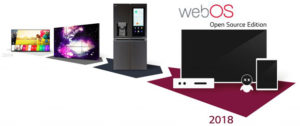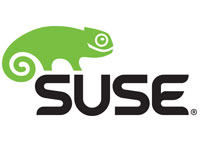The Linux Foundation this week announced an agreement with AT&T and Tech Mahindra to launch the Acumos Project, a new platform for open source development of artificial intelligence.
The new platform is part of a broader effort to open up opportunities for AI collaboration in the telecommunications, media and technology sectors.
The Linux Foundation has been working with AT&T and Tech Mahindra for months to put this deal together, in the hope of creating a framework for new development in a standardized environment.
The project “will enable a community of AI-interested contributors to collaboratively work on an AI platform together under a proven governance structure for distributed open source software development,” said Mike Dolan, vice president, strategic programs, at The Linux Foundation.
“The Acumos Project community that we are helping get started will have the opportunity to work together under an open governance model at a neutral entity within the nonprofit Linux Foundation,” he told LinuxInsider.
The plan calls for the participants to build out the community of interested contributors over the next few months, Dolan said, and they expect to announce the availability of the open source code by early 2018.
Potential Applications
AT&T is a Platinum Member of The Linux Foundation, Dolan noted, and the two organizations worked together on the Open Network Automation Platform launch last year.
The evolution of artificial intelligence from science fiction to reality needs a platform that can help make AI apps reusable and accessible to those beyond the companies that originally make them and lower the barrier to entry, according to AT&T.
“The goal of the Acumos platform is to accelerate adoption of AI solutions, especially in the TMT (technology, media and telecom) space through community based collaboration,” AT&T said in a statement provided to LinuxInsider by company rep Kacie Thomas.
“Today, IT developers don’t have access to AI microservices as part of their toolbox,” noted Raman Abrol, spokesperson for Tech Mahindra.
“The Acumos platform will give developers exposure to microservices, without needing to be experts,” he told LinuxInsider.
“It’s not another AI toolkit. It’s a framework for wrapping AI models into microservices, which can be easily incorporated into conventional software and deployed,” Abrol explained. “AI model developers will get a new marketplace where they can showcase their work — not just within the community, but for the larger world. Making it open to all can lead to an entire industry of AI software built around a machine learning ecosystem.
This platform has potential applications for autonomous vehicles, drones, content creation and augmented and virtual reality.
“Our goal is to make it easier to apply AI algorithms to practical problems,” AT&T said. “It will let us use machine learning to tackle common problems in the networking industry. This includes spotty wireless coverage, matching cell site placement in order to match capacity to actual usage, and filling in coverage gaps based directly on dropped call statistics.
“In the smart cities space, AI can help us make more informed energy decisions,” the company pointed out. “AI can associate energy usage with weather forecasts and business calendars to more reliably shift between energy sources, like solar, wind and fossil fuel generation, on the fly, without over production or unexpected shortages.”
Raising the Bar
Any type of move by a major player like AT&T will make an impact, said Rob Enderle, principal analyst at the Enderle Group.
In this case, the focus most likely will be on enhancing AI on mobile devices, he told LinuxInsider.
“Still, we are in the early years of AI, and right now, training — not whether the code is open source — is the limiting factor for rollouts,” Enderle pointed out. “There remains a concern regarding compromising the code in an AI, making it dangerous, which works against open source at the moment.”
Despite those concerns, this collaboration should at the very least accelerate development of AI projects on Linux for now.
The Acumos Project is part of a larger industry movement toward an enterprise-grade AI platform, observed Aditya Kaul, research director at Tractica.
“The problem comes in when you’re trying to mold that model into your back-end enterprise environment,” he told LinuxInsider.
The large Internet players already have the algorithms in place, Kaul said, and there is a push to create alternative models so as not to be overly dependent on the ecosystems of firms like Google.





















































